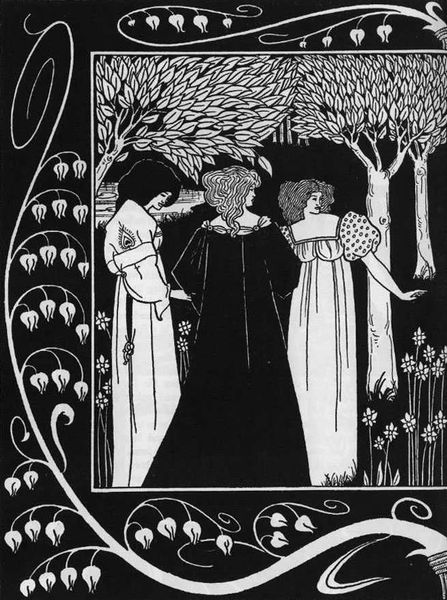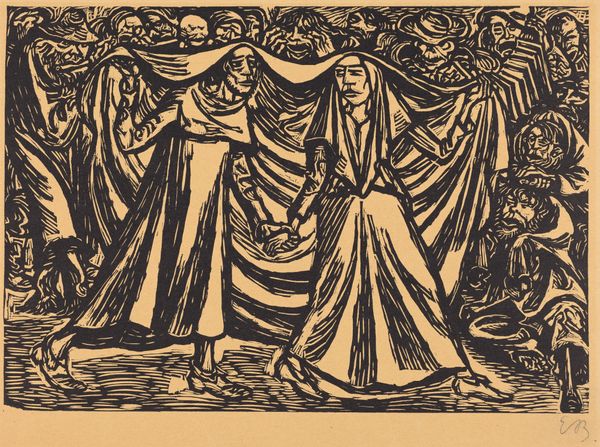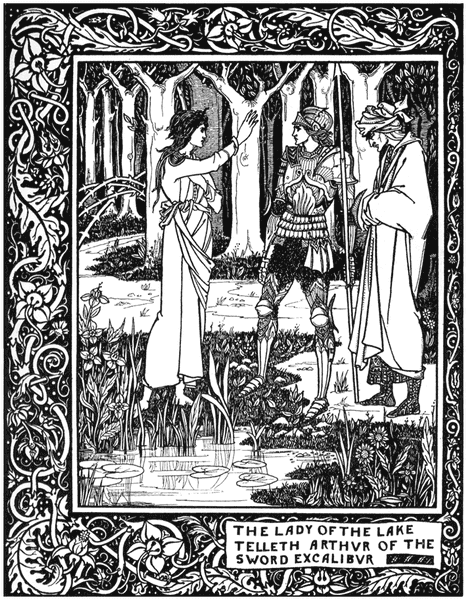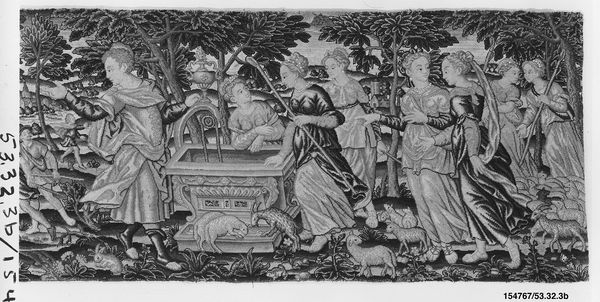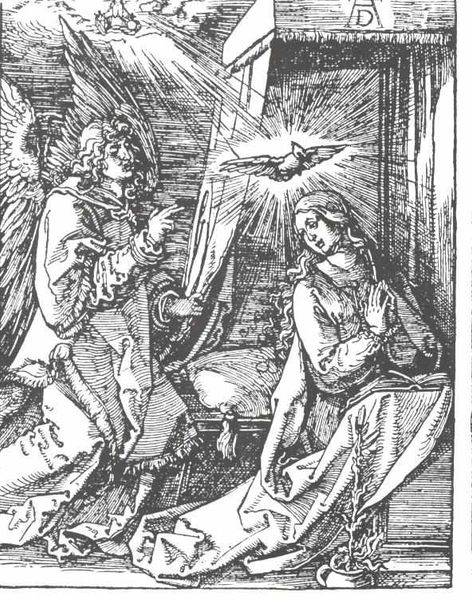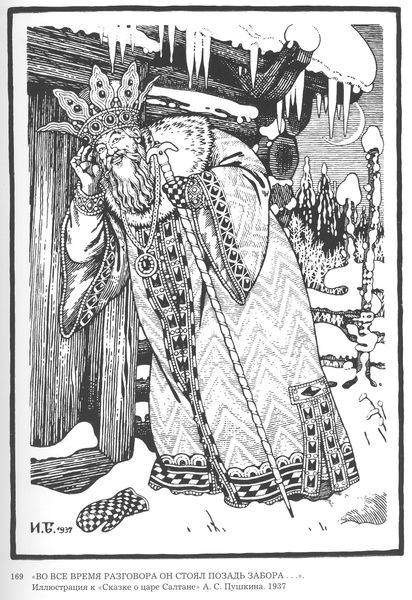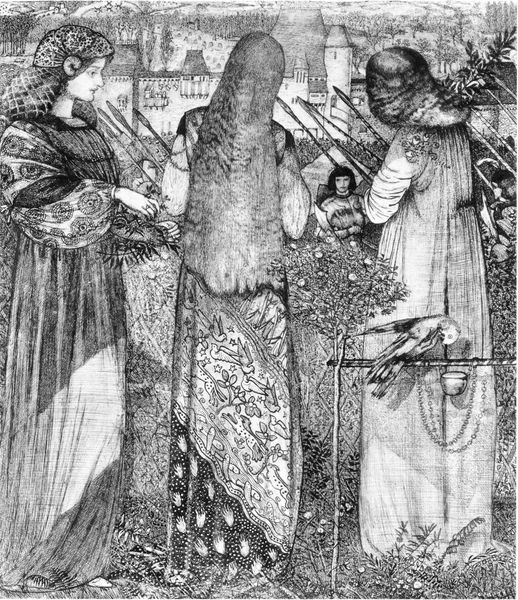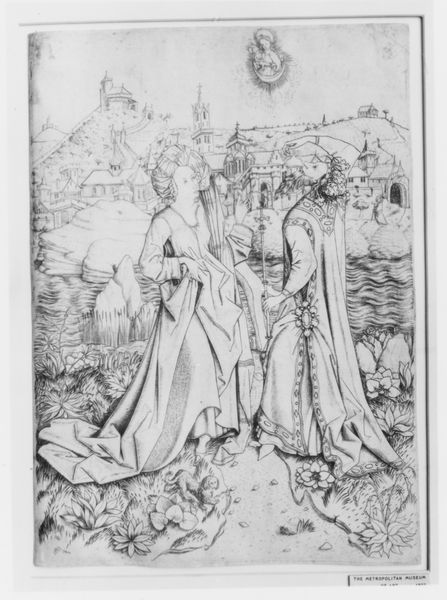
drawing, paper, ink
#
portrait
#
drawing
#
narrative-art
#
arts-&-crafts-movement
#
figuration
#
paper
#
ink
#
genre-painting
Copyright: Public domain
Curator: “Roses of Yesteryear,” dating to 1896, by Lucien Pissarro. It's an ink drawing on paper, offering a snapshot into fin-de-siècle sensibilities. Editor: It feels incredibly contained, almost claustrophobic, despite being set in a garden. The stark contrast between black and white reinforces that feeling of constraint. What do you make of it? Curator: Contextually, this drawing speaks to the Arts and Crafts Movement, emphasizing a return to handcrafted quality amid industrialization. It situates women within the domestic sphere, reinforcing traditional gender roles, but with a certain artistic flourish. There’s tension there, isn’t there? Editor: Definitely a tension. Roses often signify love, beauty, and transience. One woman holds a single rose – is it an offering, or a symbol of something lost? The vine-like design encompassing the scene underscores nature's grip, or perhaps life's interconnectedness. The rose as a Victorian emblem? Curator: Precisely. Considering turn-of-the-century class dynamics, the attire and leisurely setting likely place these women within a certain societal echelon. The artist’s subtle choices – their dresses, the carefully depicted garden, speaks volumes about their privileges and expectations. Who were they, one wonders? What narratives are silenced in such idyllic representations? Editor: Right, the patterning of those dresses and the surrounding garden design almost meld together. There's also the fence bisecting them from the garden, representing literal boundaries. Almost as though these women are set pieces themselves, cultivated within their surroundings. The viewer almost never catches one face; two out of three profiles only. As if the women and setting are parts of a puzzle, not individual agents with their own desires and wants. Curator: That lack of clear narrative invites us to critically examine the roles imposed upon them and, by extension, consider how societal constraints still play out in contemporary contexts for women and other marginalized groups. We could reflect on how image economies define female bodies even now, how ideas of what woman should be remain present even within liberal thinking. Editor: And so we return again to those thorny questions behind symbols and art! I appreciate seeing the way a seemingly innocuous image continues to provoke such insightful discussion. Curator: Absolutely. Pissarro offers not just an aesthetic representation, but a rich field for intersectional exploration and questioning normative ideologies.
Comments
No comments
Be the first to comment and join the conversation on the ultimate creative platform.
